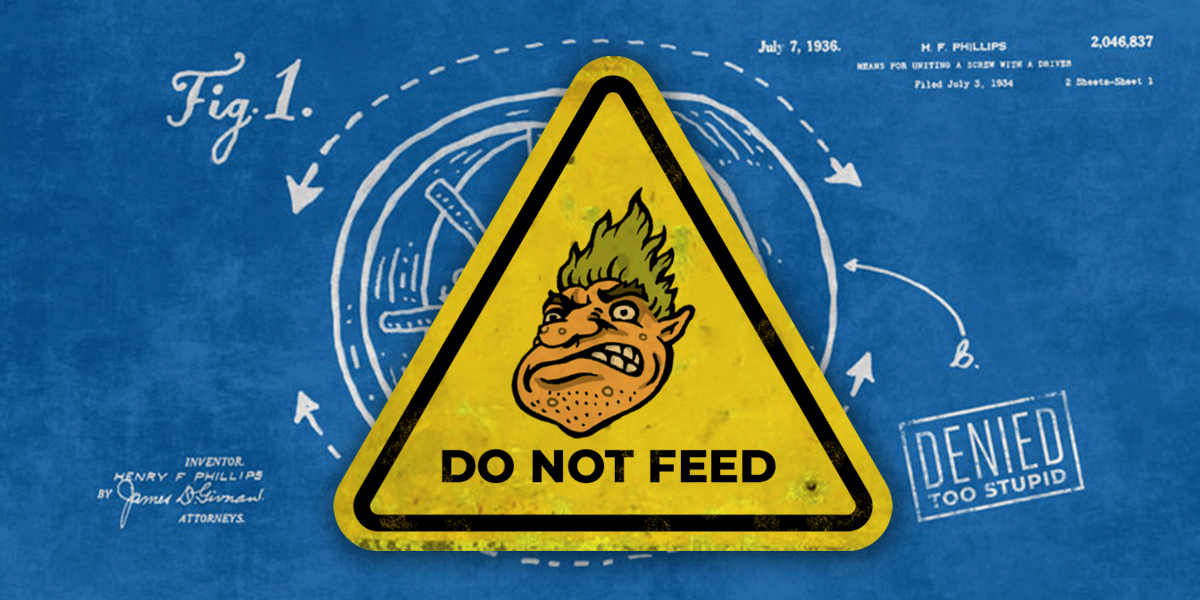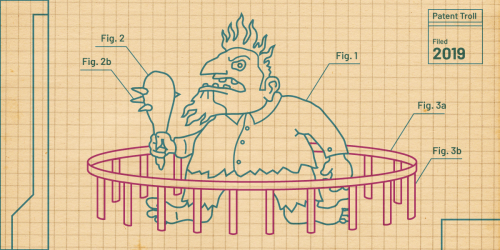The U.S. Patent and Trademark Office (USPTO) grants more than 300,000 patents each year. Some of those patent grants represent genuine new inventions, but many of them don’t. On average, patent examiners have about 18 hours to spend on each application. That’s not enough time to get it right.
Thousands of patents get issued each year that never should have been issued in the first place. This is a particular problem in software, which is a bad fit for the patent system. That’s why it’s so critical that we have a robust patent review system. It gives companies that get threatened over patents the opportunity to get a second, more in-depth review of a patent—without spending the millions of dollars that a jury trial can cost.
Our patent review system is ten years old now, and patent trolls and other aggressive patent holders have learned to game the system. Unfortunately, the USPTO has let them get away with it. A recently introduced bill, the Restoring the America Invents Act (S. 2891) will close some of the loopholes that patent owners have used to dodge or weaken reviews.
Inter Partes Review
Congress recognized the need for such a system when it passed the 2011 America Invents Act, and created a review system called “inter partes review,” or IPR. The IPR process lets a particular department of the patent office, the Patent Trial and Appeal Board (PTAB), hold a quasi-judicial process in which they take a second look to decide if a patent really should have been granted in the first place.
The IPR system isn’t perfect, but the process has been a big improvement over the patent office’s previous review systems. Over the 10 years it’s been in operation, the PTAB has reviewed thousands of patents. In the majority of cases that have gone to a final decision, PTAB judges have decided to cancel all or some of the claims in question.
It’s important to put this in context. The thousands of canceled patents are just a tiny fraction of the number that the government is giving away. In the most recent fiscal year, 265 patents had one or more claims canceled, according to USPTO statistics. That’s less than .1% of the 340,000 patents that were granted in the same period, and a minute fraction of the 3.8 million patent monopolies that the patent office believes are active.
The IPR system isn’t perfect, but overall it has been a win for the public. It’s no surprise that some patent owners don’t like it. With more administrative tools to get at the truth, more patents are found to be invalid.
Closing Four Loopholes
First, the bill would close a big loophole in the process that has come to be known as “discretionary denial.” Basically, this is when a panel of PTAB judges refuses to even consider the merits of an IPR petition. The most common excuse for a discretionary denial is that there’s related court litigation on the same patents that is coming up soon. There’s nothing in the law that says PTAB needs to consider this, but it’s been happening more and more in recent years.
This loophole even got an official stamp of approval in a PTAB proceeding called Fintiv. So-called Fintiv denials now represent nearly 40% of all denied IPR petitions. One particular federal judge has even marketed his court as a good place to go for patent owners who would like to get a Fintiv denial, as well as other benefits.
EFF has spoken out against this problem, asking for Congress to stop patent owners’ gamesmanship of the IPR process. This bill would do just that. The Restoring the AIA Act states simply, “a petition that meets the requirements of this chapter shall be instituted.” It’s time to close this loophole, before patent trolls make it even bigger.
Second, the bill creates new rules regarding the role of the Director of the USPTO. That’s important since a recent Supreme Court ruling (U.S. v. Arthrex) gave the Director the power to review, and even overturn, the results of IPR proceedings. The Restoring the AIA Act would make it a requirement that the Director issue a written decision when she chooses to use that power.
While this new power of the Director may not be used frequently, it’s important that there be a written record. Just like a judicial decision, a Director review could decide whether a patent stands or falls—and whether or not accused infringers must pay royalties or cease making a product. It’s basic good government that there should be a written record of such a decision.
Third, the bill will allow government agencies to file for IPRs. It doesn’t happen often, but government agencies do get accused of patent infringement. These are important cases, since any damages or royalties will be paid to patent owners with public money. Accused government agencies should have the opportunity to ask for a PTAB review, just as a private company or individual would.
That’s what EFF and some of our allies advocated for when this issue came up at the Supreme Court, in a case called Return Mail v. U.S. Postal Service. Unfortunately, the high court held otherwise in a 6-3 decision. We don’t think barring government agencies from the IPR process is what Congress intended, and this bill would make that clear.
Finally, this bill will make sure that the patents that get knocked down by IPR, stay down. It prevents the patent office from issuing patents that are “not patentably distinct” from patents that have been canceled in the IPR process.
The inter partes review process that Congress created 10 years ago is one of a few changes to IP law that has actually served the public interest. It’s no surprise that it’s made enemies over the years, some of whom have fought hard to dismantle the process altogether. Fortunately, so far, they’ve failed. By closing these loopholes and making the process even stronger, Congress can make clear that the patent system works for all of the public—not just a small group of large patent owners.









